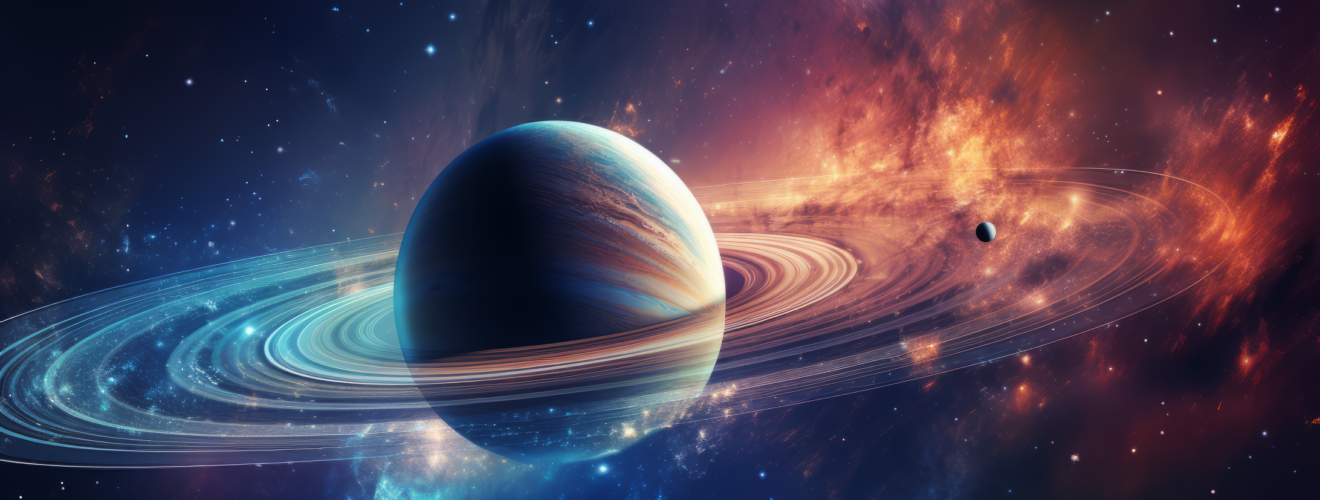Saturn – The Ringed Jewel of the Solar System

Saturn, the sixth planet from the Sun and the second-largest in our solar system, stands as a celestial marvel adorned with its iconic ring system. This gas giant, often referred to as the “ringed planet,” invites exploration and sparks the imagination with its intricate features, mesmerizing rings, and a rich tapestry of cosmic mysteries.
Ancient Reverence and Discovery
Known to ancient astronomers, Saturn has been observed for centuries. Its golden hue and slower orbital motion distinguished it from other planets visible to the naked eye. In Roman mythology, Saturn was associated with the god of agriculture, and its connection to the slow passage of time led to the naming of the Saturday, the day dedicated to Saturn.
Saturn’s Composition and Characteristics
Saturn is primarily composed of hydrogen and helium, resembling a smaller version of Jupiter. It is known for its low density, making it the only planet in our solar system that would float in water. The planet’s most striking feature is its extensive ring system, composed of countless icy particles ranging in size from tiny grains to large chunks.
The Majestic Rings
Saturn’s rings are a celestial masterpiece, comprising thousands of individual ringlets. These rings are primarily made of water ice, with some particles coated in darker materials. The origin of Saturn’s rings remains a subject of scientific inquiry, with theories suggesting they could be remnants of a moon or the result of a comet or asteroid break-up.
Saturn’s Moons and Moonlets
Saturn boasts an extensive family of moons, with over 80 confirmed natural satellites. Among its notable moons is Titan, the second-largest moon in the solar system, known for its thick atmosphere and methane lakes. Enceladus, another moon, has geysers that spew water vapor into space, hinting at the potential for subsurface oceans.
Cassini-Huygens Mission
One of the most profound explorations of Saturn came from the Cassini-Huygens mission, a collaboration between NASA, the European Space Agency (ESA), and the Italian Space Agency. Launched in 1997, the Cassini spacecraft orbited Saturn for over 13 years, providing unprecedented insights into the planet, its rings, and its moons. The Huygens probe successfully landed on Titan, returning valuable data about its surface.
Saturn’s Atmosphere and Storms
Saturn’s atmosphere exhibits bands of clouds and swirling storms, with the prominent hexagonal-shaped storm at its north pole being a particularly fascinating feature. The planet’s fast rotation contributes to its flattened shape, and the winds in its upper atmosphere can reach speeds of over 1,100 miles per hour (1,800 kilometers per hour).
The Grand Finale and Legacy
The Cassini spacecraft, in its final act of exploration, executed the “Grand Finale” by diving into Saturn’s atmosphere in September 2017. This intentional plunge provided scientists with unique data about the planet’s atmosphere and marked the end of a remarkable mission that reshaped our understanding of Saturn and its celestial surroundings.
Future Exploration
While Cassini concluded its mission, future explorations of Saturn are on the horizon. Concepts for new missions aim to return to this ringed giant, studying its moons, rings, and the dynamics of its atmosphere.
Conclusion
Saturn, with its resplendent rings and diverse moons, stands as a jewel in the cosmic crown of our solar system. From ancient admiration to modern exploration, Saturn’s allure continues to captivate scientists and stargazers alike. As humanity sets its sights on future missions, the ringed planet promises to reveal more of its secrets, adding chapters to the celestial story that unfolds within the grand tapestry of our solar system.








